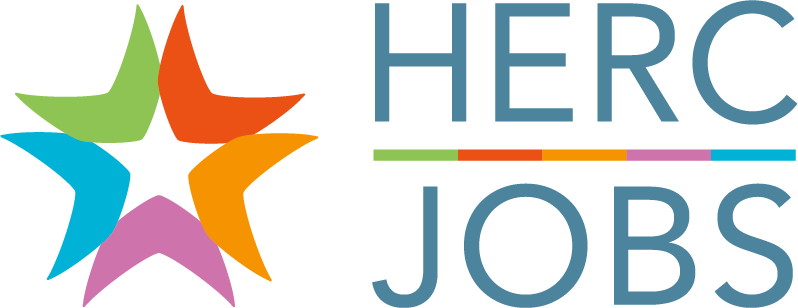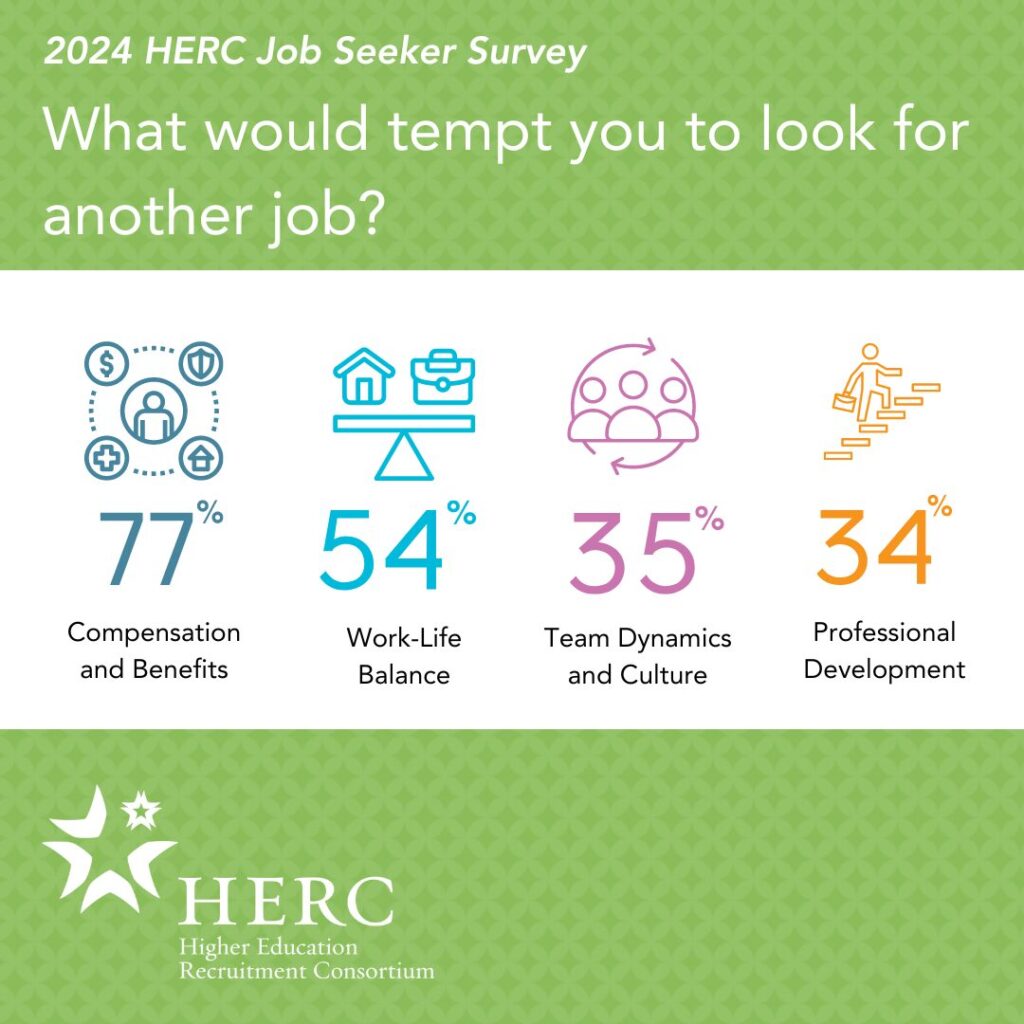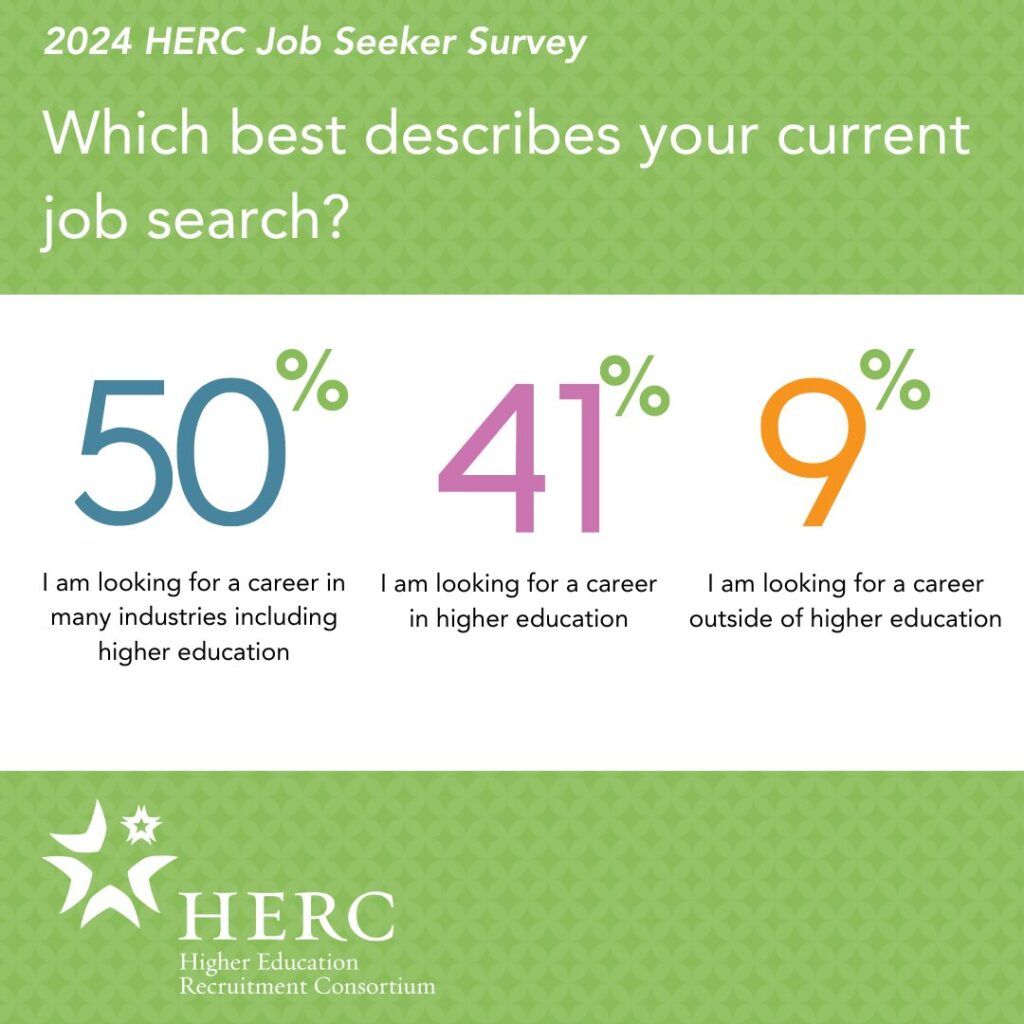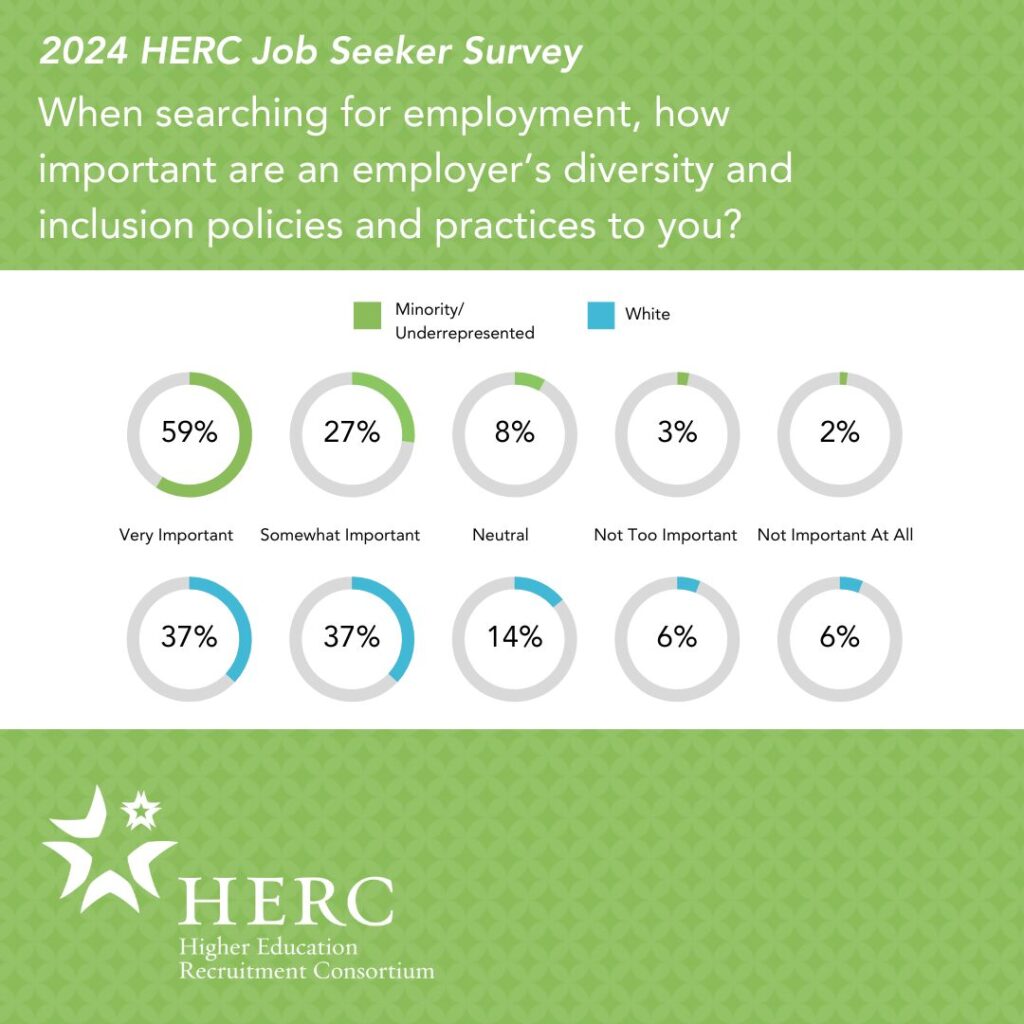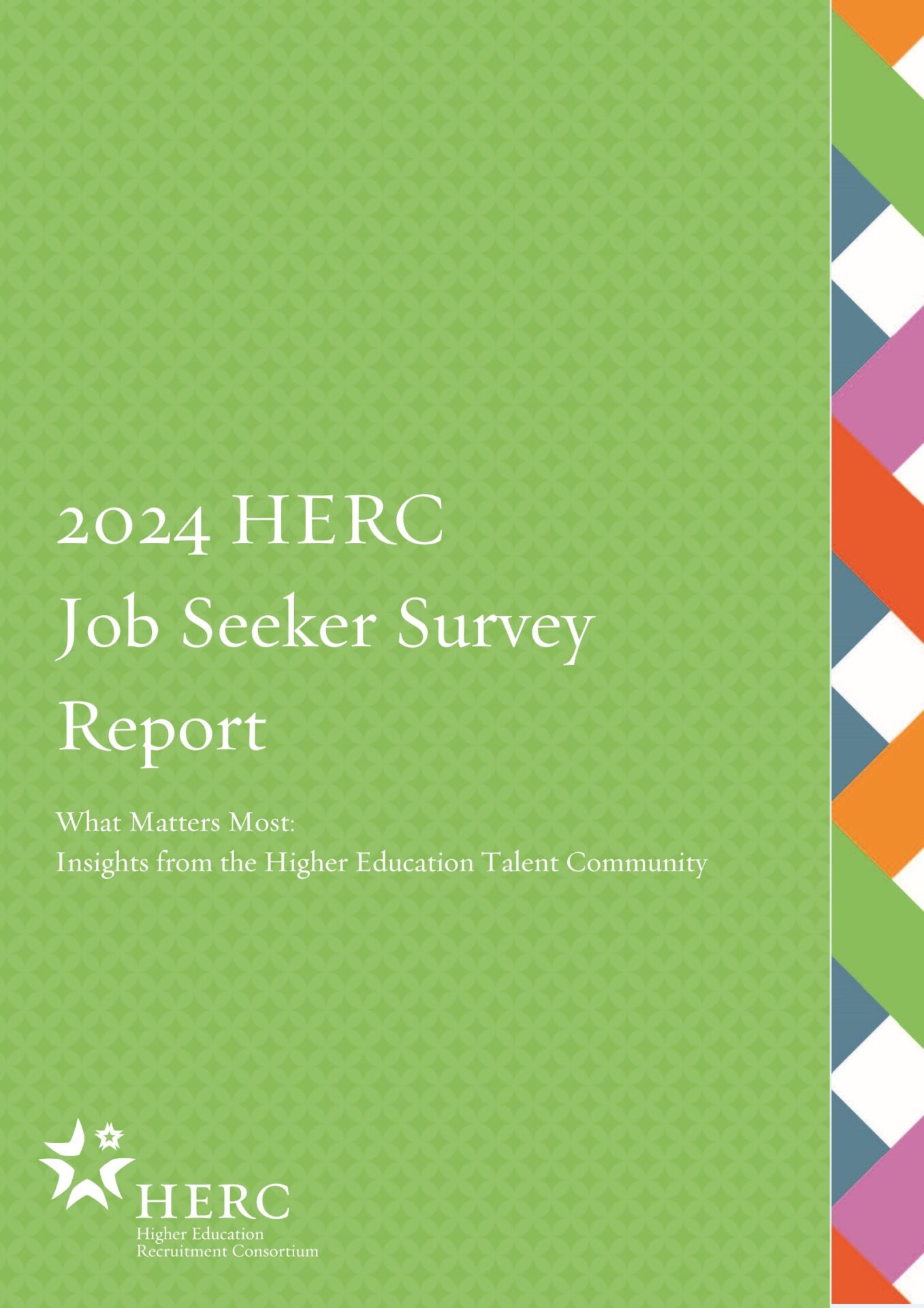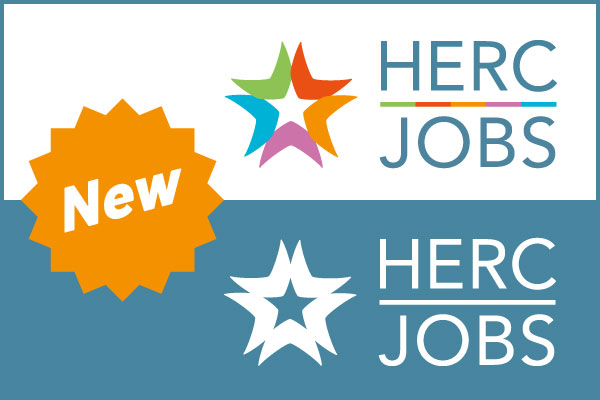
We are thrilled to announce the launch of our new job seeker brand, HERC Jobs! This milestone marks a significant step forward in our ongoing mission to support job seekers in the higher education sector.
Our long-standing brand was created for the Higher Education Recruitment Consortium (HERC), the membership association representing colleges, universities, and related groups committed to building an inclusive higher education workforce. From that commitment, we developed a website featuring a job board and free career resources for job seekers.
For the last few years, we’ve engaged in internal discussions about developing a dedicated brand that represents and communicates our offerings to job seekers.
We adopted a new, yet familiar name—HERC Jobs—in July 2024. This new branding, accompanied by a fresh logo, will gradually roll out across all our channels and materials for job seekers. More immediately, you will see this new branding in the launch of our inaugural HERC Jobs Higher Ed Virtual Career Fairs.
We are excited about this new chapter and confident that HERC Jobs will significantly enhance our ability to connect you with rewarding careers in higher education. Stay tuned for more updates as we roll out our new branding and continue to support your career aspirations!
If you’re new to HERC Jobs, we offer these tools and resources to help you find your ideal job in higher education:
Career Advice
Explore career resources for tips and tools for job searching, career planning, networking, and leadership building. Download our free ebooks and get our monthly newsletter (sign up using the web form on this page or at the bottom of our homepage).
Job Board
Browse job postings or use our search tool to find faculty, staff, and executive positions, including IT, finance, logistics, administrative, and healthcare jobs. Sign up for a free account to apply for jobs and access other tools and resources.
Job Seeker Profile
Employers (i.e., colleges, universities, and other higher education institutions) can search for candidates using our resume/CV database. To be included in our resume/CV database, you must create a job seeker profile.
Custom Job Alerts
After you create a free account, create a job alert to get email notifications whenever new jobs fitting your criteria are published on HERC Jobs. You can set up multiple job alerts and change or delete them easily.
Dual Career Resources
Use HERC Job’s dual career search to find jobs that meet both your and your partner’s job search criteria. Check out a list of institutions with dual career campus programs.
